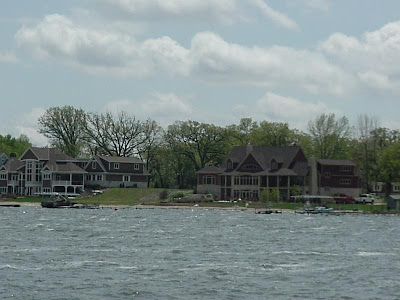South of the Valpo Moraine is the kankakee outwash plain. This carried the meltwaters away from the glacier. It was formed because of the waters cutting through the moraine and depositing sand. All the meltwaters escaped on the Kankakee river which in turn merges with the Des Plains river which empties out into the Mississippi river and then into the Gulf Of Mexico. Before all the draining it was the largest freshwater marsh in the country. It was a problem in early settlement but now produces good hunting and fishing.
There are 3 old shorelines to lake Michigan. They are the Glenwood, Calumet, and Tolleston Shorelines. The oldest lakeshore is The Glenwood which happened about 14,400-12,200 years ago. It is the highest of the shorelines at 640 feet. The first beaches that were formed on this shoreline were the Dyer and Schererville. It got its name because the best kept beaches were along Glenwood-Dyer Road.
The next shoreline to form was the Glenwood Shoreline. It stood at 620 ft which is 20 ft higher than what it is today. This shoreline got its name from the Calumet River that was nearby. The sand from this was moved to fill wetlands to help with settlement in the area. all the beaches on the Calumet are much smoother than on the Glenwood. Both of those shorelines were formed near each other where in spots the Calumet buries the Glenwood. This shoreline is mainly what Ridge Road is today.
The last and youngest of the shorelines is the Tolleston Shoreline. It stood at 605 ft and is the smallest of all 3 shores. It was the first barrier beach in Lake County. Even though it is the smallest shoreline it still stands 25 ft taller than Lake Michigan does today. Beacuse of the way it formed and being a spit/barrier, it had the lake to the north and formed the calumet lagoon in the south. About 3,800 years ago the lake lowered to its current level. There was a pulsating pattern that created more than 150 small beach ridges and were all mainly parallel. The water level finally leveled off and reached it current level about 1,500 years ago. about that same time a spit formed and closed off Lake Calumet. Then 400 years later the same thing happened to cause Wolf Lake. There were dunes that formed off the lakeshore in Porter County,which has the tallest dunes which are Indiana Dunes State Park, and LaPorte County, which has Mt. Baldy which is migrating little by little every year.
Schoon, K. J. (2003). Calumet beginnings. Bloomington,In: Indiana Univery Press.
 |
| http://ebeltz.net/folio/fig14.jpg |









